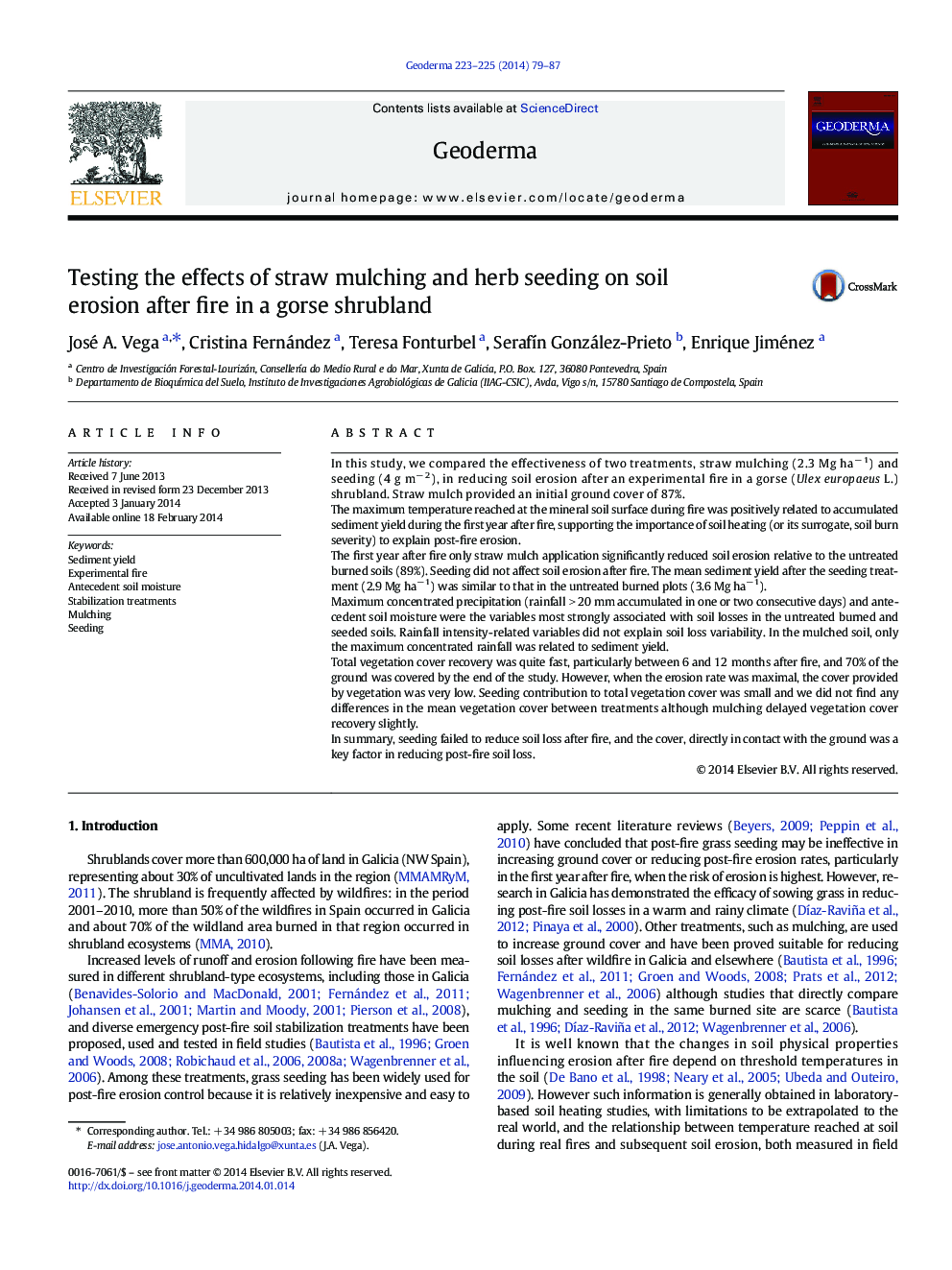| کد مقاله | کد نشریه | سال انتشار | مقاله انگلیسی | نسخه تمام متن |
|---|---|---|---|---|
| 4573398 | 1629473 | 2014 | 9 صفحه PDF | دانلود رایگان |
• Straw mulch effectively reduced post-fire erosion whereas seeding failed to do it.
• Vegetation cover did not affect soil losses.
• The treatments did not affect vegetation cover recovery.
• Surface soil moisture in burned soil was not affected by mulching.
• Rainfall intensity-related variables did not explain soil loss variability.
In this study, we compared the effectiveness of two treatments, straw mulching (2.3 Mg ha− 1) and seeding (4 g m− 2), in reducing soil erosion after an experimental fire in a gorse (Ulex europaeus L.) shrubland. Straw mulch provided an initial ground cover of 87%.The maximum temperature reached at the mineral soil surface during fire was positively related to accumulated sediment yield during the first year after fire, supporting the importance of soil heating (or its surrogate, soil burn severity) to explain post-fire erosion.The first year after fire only straw mulch application significantly reduced soil erosion relative to the untreated burned soils (89%). Seeding did not affect soil erosion after fire. The mean sediment yield after the seeding treatment (2.9 Mg ha− 1) was similar to that in the untreated burned plots (3.6 Mg ha− 1).Maximum concentrated precipitation (rainfall > 20 mm accumulated in one or two consecutive days) and antecedent soil moisture were the variables most strongly associated with soil losses in the untreated burned and seeded soils. Rainfall intensity-related variables did not explain soil loss variability. In the mulched soil, only the maximum concentrated rainfall was related to sediment yield.Total vegetation cover recovery was quite fast, particularly between 6 and 12 months after fire, and 70% of the ground was covered by the end of the study. However, when the erosion rate was maximal, the cover provided by vegetation was very low. Seeding contribution to total vegetation cover was small and we did not find any differences in the mean vegetation cover between treatments although mulching delayed vegetation cover recovery slightly.In summary, seeding failed to reduce soil loss after fire, and the cover, directly in contact with the ground was a key factor in reducing post-fire soil loss.
Journal: Geoderma - Volumes 223–225, July 2014, Pages 79–87
